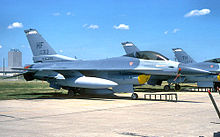113th Air Support Operations Squadron
The squadron, or elements thereof, called up to perform the following state duties: aerial surveillance of labor troubles in Vanderburg and Warwick Counties 22 February-23 March 1926; flood relief duties at Hazelton-Vincennes, IN, during the Wabash River flood 15–21 January 1930; aerial mapping survey of the state of Indiana in 1930; aerial surveillance of labor troubles during a coal miners' strike at the Dixie Bee Mine August–October 1932; flood relief efforts along the Ohio River in southern Indiana during January–February 1937.The 113th was operating Douglas O-38Bs and North American O-47A/Bs when called to active duty on 17 January 1941 as part of the build-up of the Army Air Corps after the Fall of France.Ten days later the unit transferred to Key Field, Mississippi and began flying (assigned to the 67th Observation Group, 3d Air Force) Anti-Submarine patrols with O-47s, O-49s and O-52s over the Gulf of Mexico.It was organized at Stout Field, Indianapolis, Indiana, and was extended federal recognition on 9 December 1946 by the National Guard Bureau.The 113th flew training missions primarily over the northern part of Indiana, while the 163rd operated from Indianapolis south to the Ohio River border with Kentucky.With the surprise invasion of South Korea on 25 June 1960, and the regular military's complete lack of readiness, most of the Air National Guard was federalized placed on active duty.The unit was re-formed at Stout Field and continued to fly the F-51H Mustangs, returning to its pre-federalization air defense mission of Indiana.In 1959 and 1960 the squadron participated in exercises Dark Cloud and Pine Cone III, the latter taking place at Congaree AFB, South Carolina.On 1 October 1961 the 113th and the 122d Tactical Fighter Wing was federalized and ordered to active service as part of Operation Tack Hammer, the United States response to the 1961 Berlin Crisis.Rotations of Air National Guard pilots from the stateside squadrons in Indiana was performed to train them in local flying conditions in Europe.This allowed the 163rd to maintain 100 percent manning and also to relieve the boredom of the national guard pilots on active duty in CONUS and kept them connected to the overseas part of the Wing.By April, the Berlin Crisis appeared to be settled and the Kennedy Administration was interested in saving money on this emergency call-up of national guard units.On 11 September 2001, the 181st Fighter Wing wasted no time in joining the War on Terrorism as it responded after the attack on the World Trade Center and The Pentagon in less than four hours to the task of flying Combat Air Patrols over the Midwest as part of Operation Noble Eagle.The DGS is an intelligence based mission, monitoring near real time video feed from Predators, Global Hawks and other unmanned aerial vehicles hovering the skies over any military area of operation.The servicemembers will process, exploit, and disseminate the video feed, providing actionable intelligence to the ground commanders and war-fighting forces.




United StatesIndianaAir National GuardIndiana Air National GuardTerre Haute Air National Guard Base181st Intelligence WingWorld War I29 original National Guard Observation SquadronsUnited States Army National GuardWorld War IIKelly FieldPennsylvania National GuardAmerican Expeditionary ForceArmy Air CorpsFall of FranceKey Field67th Observation Group3d Air ForceGulf of MexicoBirmingham Army AirfieldBell P-39 AiracobrasStout FieldNational Guard Bureau122d Fighter GroupF-51D MustangSouth Korea163rd Fighter SquadronAir Defense CommandEastern Air Defense ForceF-51H MustangsB-29 SuperfortressScott AFBSioux City MAPCentral Air Defense Force4706th Air Defense Wing33d Air DivisionHulman FieldF-80C Shooting StarKorean WarF-86A SabresF-84F ThunderstreaksTactical nuclear weaponsCongaree AFBTurner Air Force BaseHamilton Air Force Base1961 Berlin Crisis163rd Tactical Fighter SquadronChambley-Bussières Air BaseSeventeenth Air Force366th Tactical Fighter Wing363d Tactical Reconnaissance WingShaw AFBRF-101 Voodoo181st Tactical Fighter GroupHickam AFBSouth VietnamVincent AFBF-100C/D Super SabresVietnam WarRAF LakenheathAir Force Outstanding Unit AwardDavis-Monthan AFBF-4C Phantom IIWild WeaselTactical Air CommandAerospace Defense CommandAir Defense, Tactical Air Commandnumbered air force50th Tactical Fighter WingHahn Air BaseAir Combat CommandIndianapolis 500Romania1996 Summer Olympic GamesOperation Southern WatchAl Jaber Air BaseOperation Northern WatchIncirlik Air BaseLITENING targeting podWorld Trade CenterThe PentagonOperation Noble EagleOperation Joint ForgeOperation Deep FreezeOperation Enduring FreedomOperation Iraqi FreedomBase Realignment and Closure177th Fighter WingNew Jersey Air National GuardAtlantic City Air National Guard BaseGlobal War on TerrorismIndiana National Guard38th DivisionV Corps66th Observation Group77th Observation Group4706th Defense Wing122d Tactical Fighter WingOlmsted FieldWilbur Fagley FieldMacDill FieldNew Orleans Army Air BaseHattiesburg Army Air FieldStinson FieldDeRidder Army Air BaseAlamo FieldAbilene Army Air FieldEsler FieldBirmingham Army Air FieldBaer FieldScott Air Force BaseCurtiss JN-6Consolidated PT-1 TrustyDouglas BT-1Curtiss O-11Consolidated O-17 CourierDouglas O-38BNorth American O-47Stinson O-49 VigilantCurtiss O-52 OwlPiper L-4 GrasshopperBell P-39 AiracobraNorth American P-51D MustangLockheed F-80C Shooting StarNorth American F-86A SabreRepublic F-84F Thunderstreak